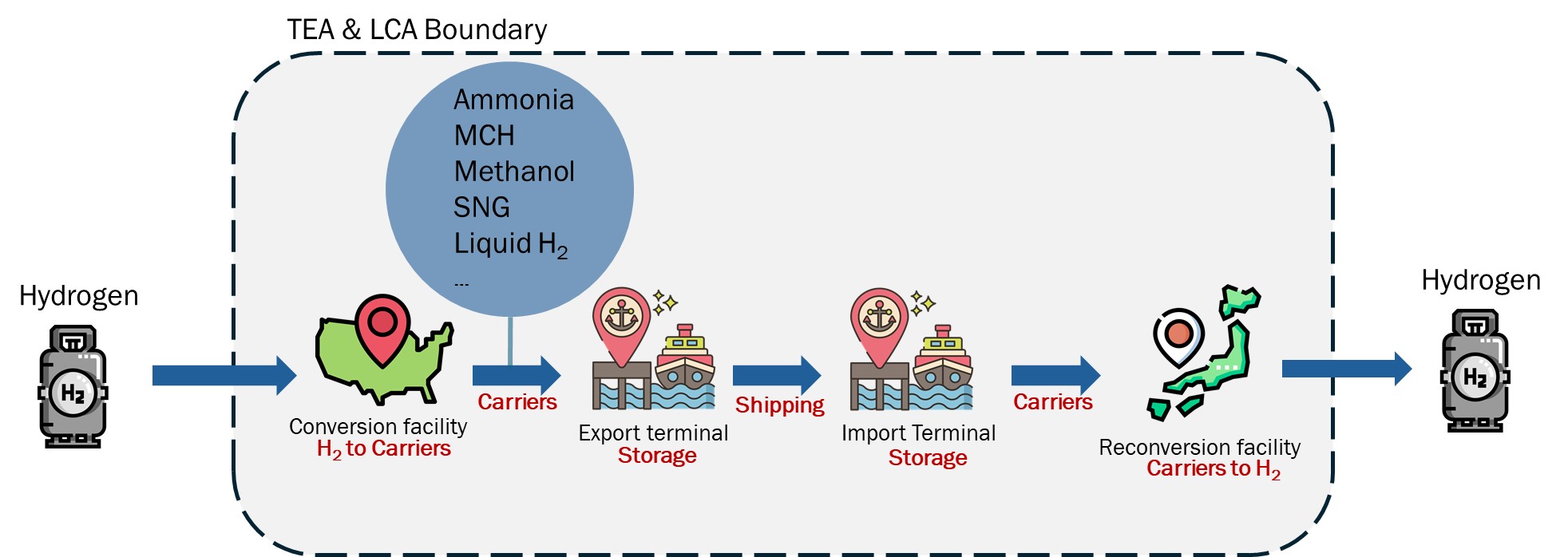NOTE: This abstract is tentative in terms of authors and content as it goes through a vetting process with industrial collaborators.
Hydrogen is often considered a promising source of clean energy. However, its low volumetric energy density makes its efficient transportation challenging, especially across long distances. Hydrogen carriers have been proposed as a means of overcoming some of the challenges associated with hydrogen transport. Several studies have been conducted on specific hydrogen carriers along specific supply chains; comparing costs, GHG emissions, mass efficiency, and energy efficiency. However, the hydrogen carrier supply chain has many different variables and design choices that influence the costs and emissions associated with the transport, making comparisons between the different carriers, and between different studies for the same carriers, challenging.
In this work, we conduct a technoeconomic analysis (TEA) and lifecycle analysis (LCA) of widely studied hydrogen carriers, including ammonia, synthetic natural gas (SNG), methanol, and methylcyclohexane (MCH), in addition to liquid hydrogen as a benchmark. The TEA and LCA cover the conversion of hydrogen into the carrier, export terminal storage, transportation, import terminal storage, and final reconversion of the carrier into hydrogen. Furthermore, the analyses include multiple supply chain variables such as: origin of hydrogen being transported, type of ship and fuel used in transportation, method used in land transportation, fuel used in reconversion step, and inclusion of carbon capture and storage in the reconversion stage. We leverage combined industrial and academic expertise to develop a tool for a comprehensive and accurate TEA and LCA of the supply chains, while incorporating common variations in assumptions and design choices. Through the tool we answer important questions related to long distance hydrogen transportation, such as: which hydrogen carries are lowest in carbon intensity and cost for a given supply chain, and under which conditions can a given carrier be economically feasible. Answering these questions will play an integral role in the current efforts to scaleup hydrogen use as a clean fuel, or a feedstock for the production of other low-carbon fuels.


